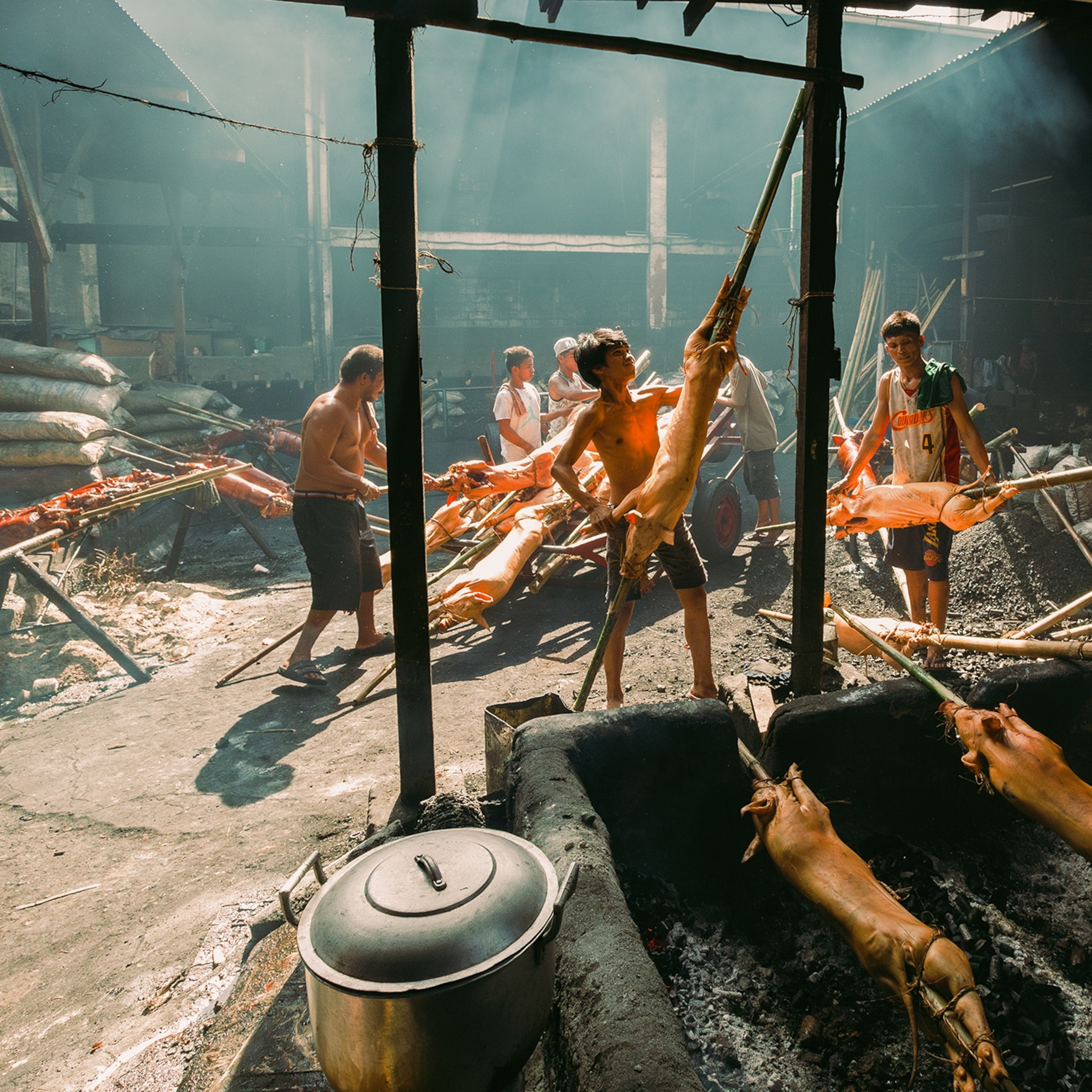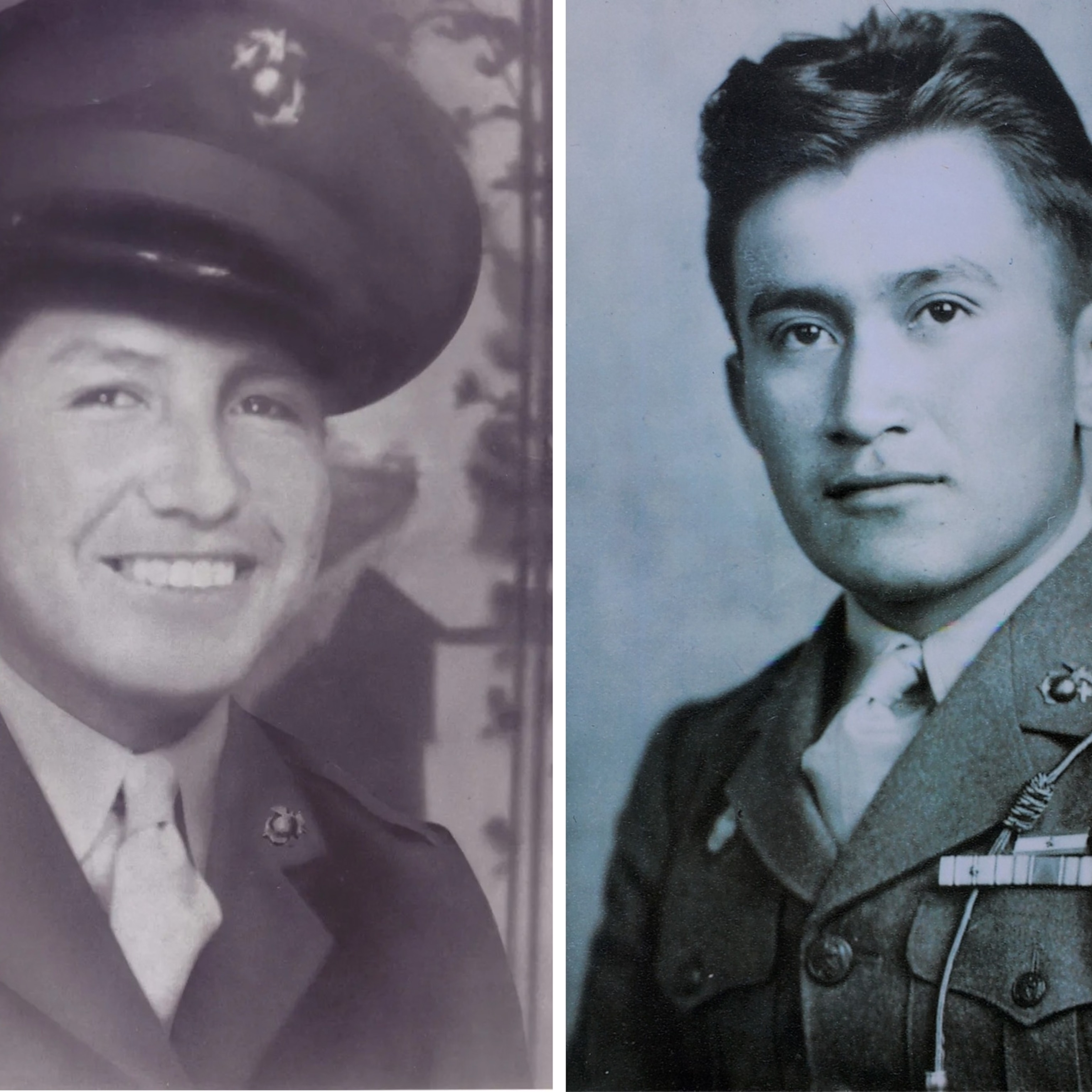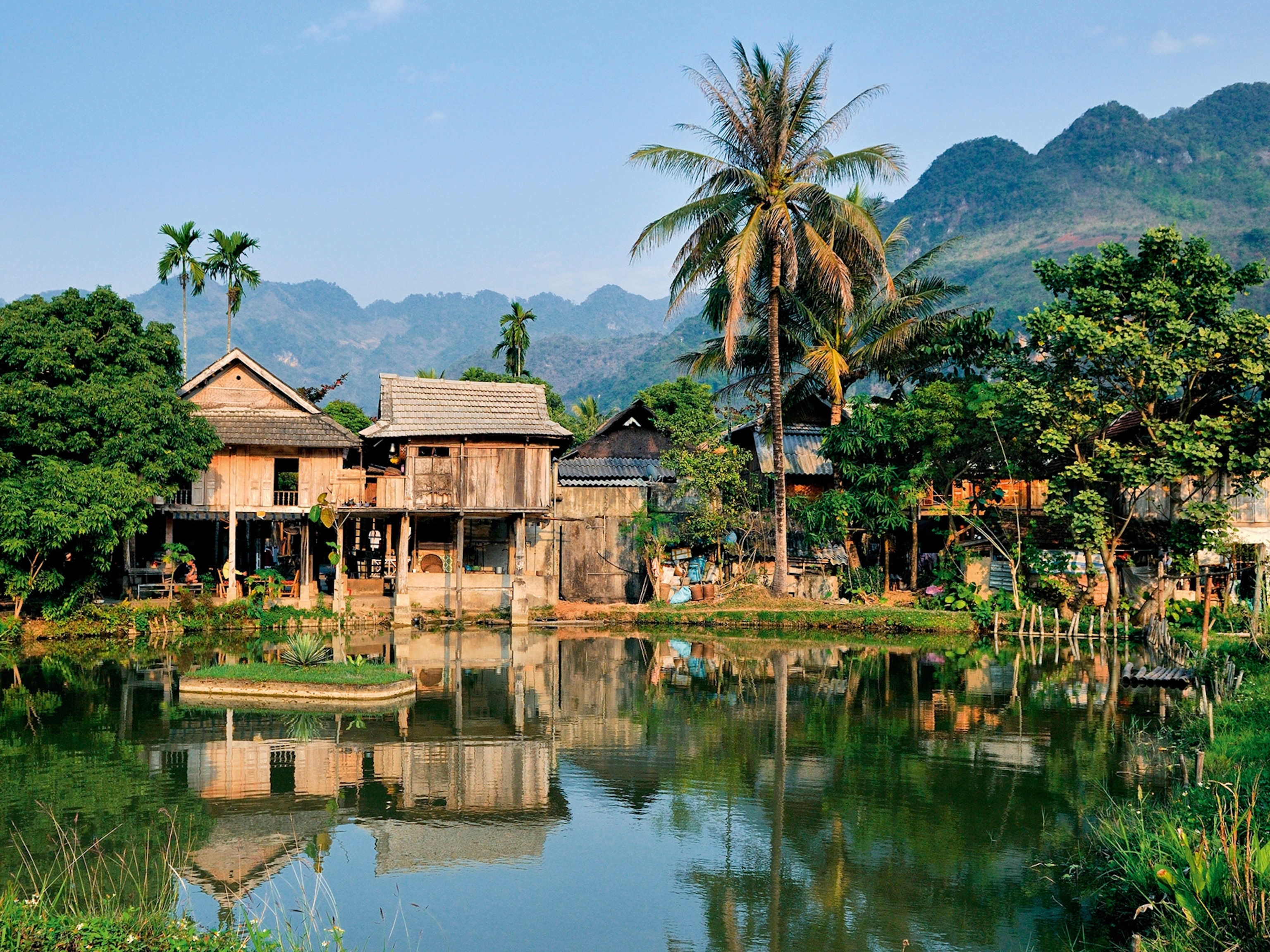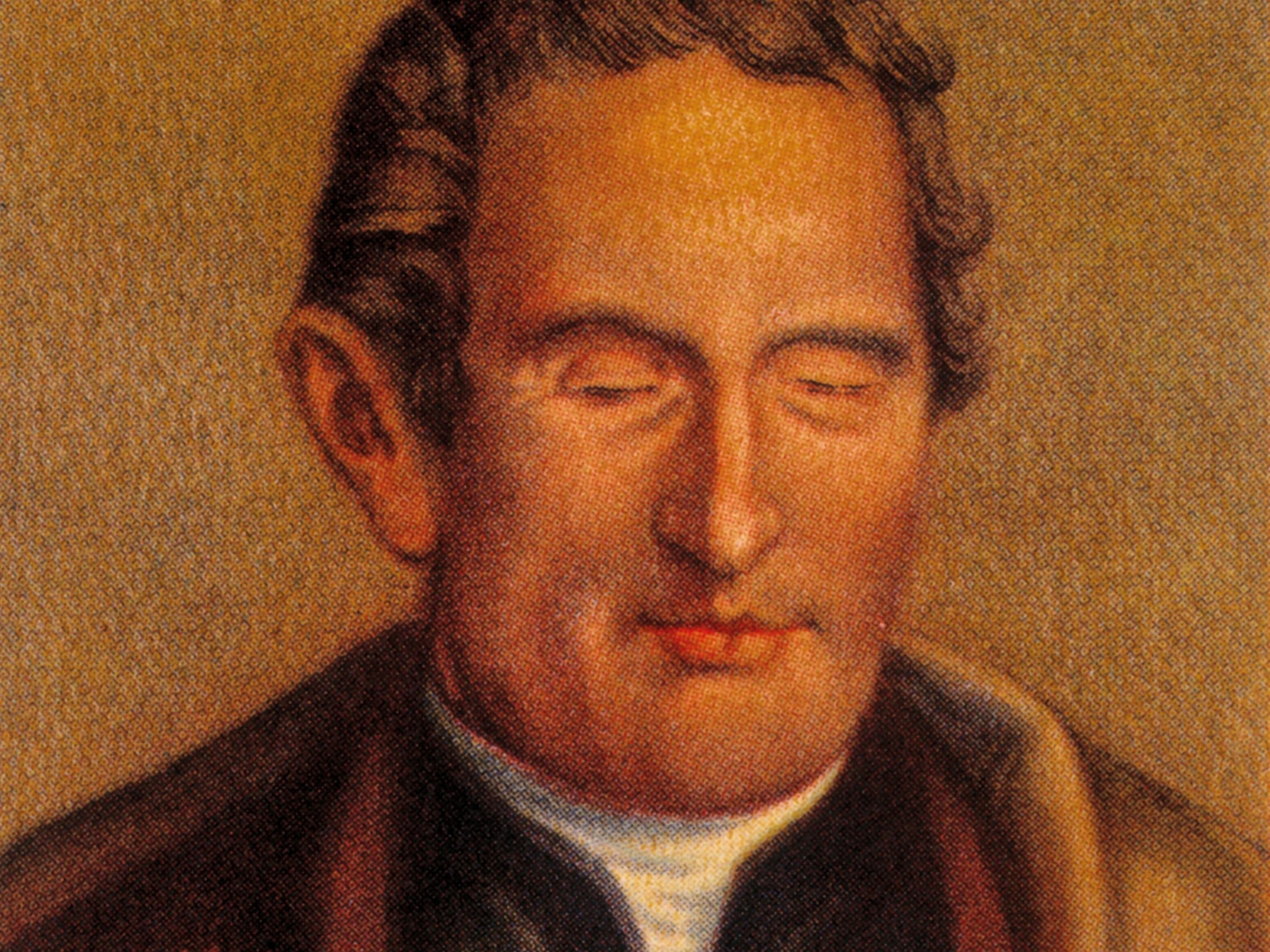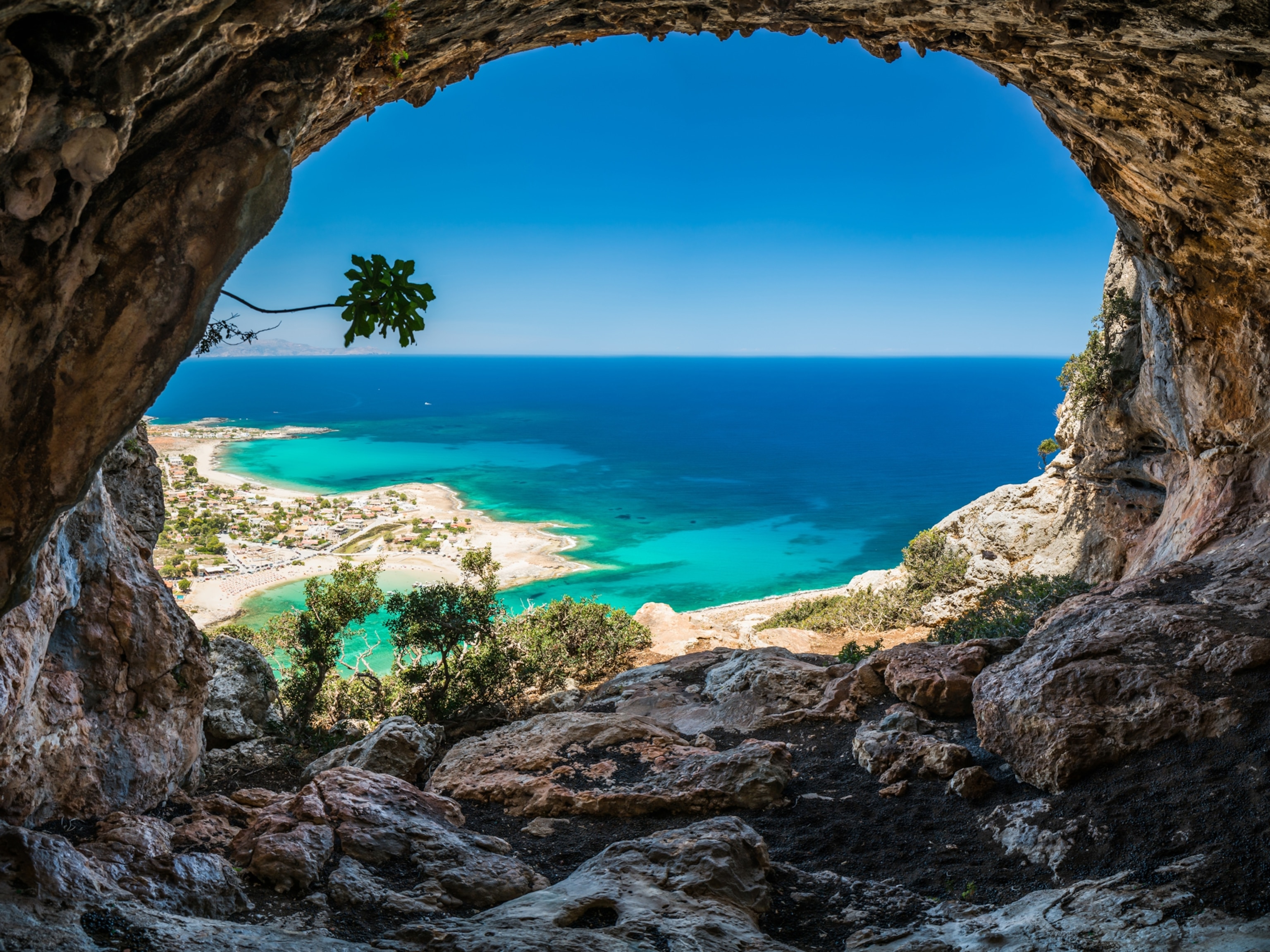
These People Have a Mind-Bending Way to Navigate
Yupno speakers in Papua New Guinea are the first known to imagine slopes to orient themselves inside flat homes.
The door of Sivek’s house looks out on a rising slope. But when he walks away from the door toward the rear of the building, he is walking “uphill”—even though the floor is flat. That’s because in Sivek’s tongue, indoor space is defined by imaginary slopes that are totally distinct from the world outside.
This is one of the most striking features of the Yupno language, spoken by around 8,000 people in the Finisterre mountain range of Papua New Guinea. While many languages around the world make use of body-based contrasts such as left and right or cardinal contrasts such as east and west, Yupno builds off the local topography to describe spatial relationships.
Such environmentally based systems for orientation are not uncommon. They can be found in indigenous languages in the Arctic, the Amazon, and the Himalaya, and various cultures embrace contrasts such as upriver/downriver or landward/seaward.
Now researchers from Chicago and California are finding that these systems can be extraordinarily flexible, to the point where Yupno speakers not only navigate using the slopes that surround their village, they project a “microworld” of slopes onto flat interior spaces.
“As soon as they enter the houses, the real topography is dropped and a new topography is created metaphorically inside the houses,” says Rafael Núñez of the University of California, San Diego, whose work was funded in part by a grant from the National Geographic Society Committee for Research and Exploration. “They would talk about ‘upvalley’ and ‘downvalley’ and ‘upslope’ and ‘downslope,’ but now on a completely flat surface and in a systematic way.”
Inner Space
Traditional houses in Gua, a Yupno village, have one door and a central fireplace running down the length of the main living area. The houses sit in a valley made up of forested hillsides and grassy inclines, with some of the buildings facing uphill and some downhill. In a region with no roads, people must carry food, water, and supplies along sloped paths, so walking uphill and downhill is an everyday activity.
In 2009, Núñez and his team were studying how the Yupno use uphill/downhill contrasts to talk about time—“uphill” words correspond to the future, while “downhill” words correspond to the past. At first the team talked to people indoors and outdoors, assuming that it wouldn’t make any difference, explains team member Kensy Cooperrider of the University of Chicago. Instead, the researchers started to notice some curious anomalies, such as “uphill” gestures being made in a direction that was completely at odds with the landscape outside.
“We started thinking about this issue of how are they talking about space indoors, how they are thinking about space indoors,” says Cooperrider.
The team carried out an initial study comparing spatial language in a downhill- and uphill-facing houses. They found that no matter which way a house faced, almost all the participants had a mental layout of the inside that featured an imaginary slope running “uphill” away from the door.
River Runs Through It
The team returned to Gua in 2013 to further explore this layout and establish if it was being used spontaneously, which would show whether they drew on the microworld topography unconsciously. Sixteen adults were asked to complete tasks in pairs, separated by an opaque screen. Each person had an identical set of plastic figures. One set was laid out in a pattern, and the first person had to describe to their partner how to replicate that pattern.
“Put the rooster’s head coming up here, toward where you are sitting. Put the corn plant horizontal toward that door area down there,” the first person called out.
The conversations, originally held in the Yupno language, were recorded and then translated into English by James Slotta of the University of California, San Diego, a non-native Yupno speaker who is also a professional linguist. The trials took place in an uphill-facing house and in an outdoor setting that matched the house’s orientation. For example, in one position, outdoor participants faced the same direction they would when sitting on the right side of the indoors fireplace, while a second position corresponded to sitting on the left side.
They would talk about 'upvalley' and 'downvalley' and 'upslope' and 'downslope,' but now on a completely flat surface and in a systematic way.Rafael Núñez, University of California, San Diego
The team found that uphill/downhill contrasts were used spontaneously and frequently in both settings. Crucially, 91 percent of the contrasts used indoors were consistent with a microworld topography of mentally constructed slopes. The study, which was published in March in Cognitive Science, shows that along with the slope they had previously identified running “uphill” away from the door, a second imaginary axis runs from the central fireplace “uphill” to the side walls.
While these axes can be at odds with the local landscape, they do echo it. In this region of Papua New Guinea, a river runs through the valley on a gentle slope, and the team believes that Yupno speakers mentally map this river onto to the central fireplace and construe it as running “downvalley” towards the door. The steep slopes that run perpendicular to the river become the “uphill” slopes from the fire to the side walls.
Can Mountains Travel?
Some anthropologists had previously suggested that such macro-to-micro mapping may occur, but this team has shown for the first time that the Yupno use it as an everyday way to talk about space, and that they do so from a young age, as a third trial involving children demonstrated.
Claire Bowern, an associate professor of linguistics at Yale University who was not a member of the study team, observed a similar environment-based system during her fieldwork in Australia.
“Bardi people use the tidal systems as a direction point, so it is ‘with the tide’ or ‘against the tide,’” she says. “But of course it changes every six hours, so you really need to know a lot about the environment and a lot about what is going on with the sea.”
What is striking in the new work, she says, is the metaphorical mapping of the valley onto the house. It doesn’t surprise her that Yupno speakers would do this, but it is the first time she has seen it in any language.
“It’s a nice example of the sorts of metaphors that make their way from general language use to something quite specific,” she says. “You could also perhaps see the analogies going in the other direction, that people might use house-based terms to refer to the environment more generally.”
Núñez wonders how rich and flexible the Yupno language may be when applied to concepts such as kinship, emotions, and numbers—complex notions that often rely on spatial contrasts. For example, in English we might talk about “the generation above” or say that we are “feeling down.”
In the long run, he hopes that revealing their linguistic feats will contribute to the lives of the Yupno and other indigenous groups, who are becoming increasingly connected to the modern world.
When their language is so reliant on local topography, be it actual or metaphorical, how will globetrotting Yupno communicate by the coast or in a city? These are the kinds of questions the team plans to investigate next.
